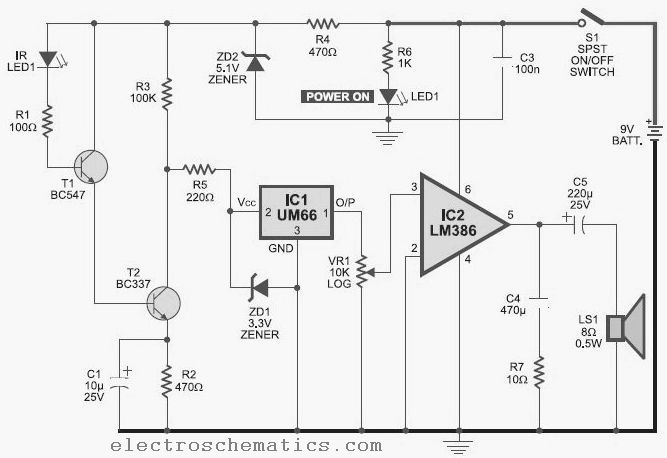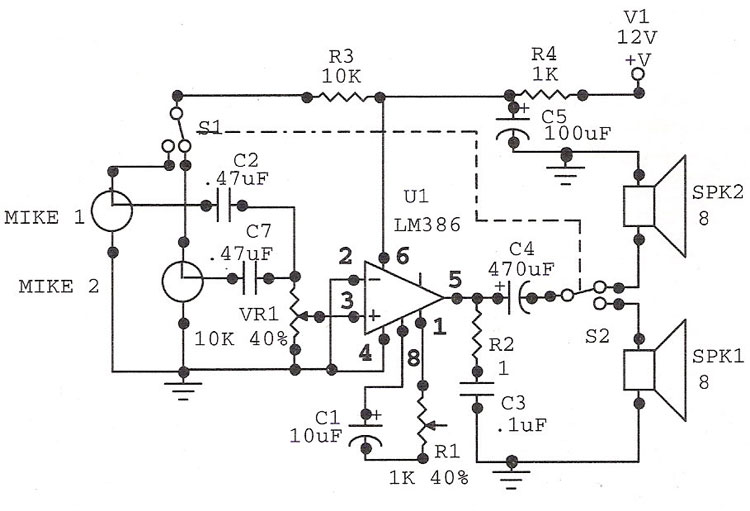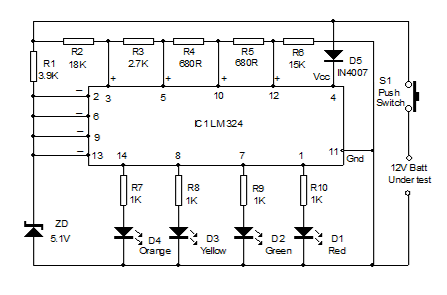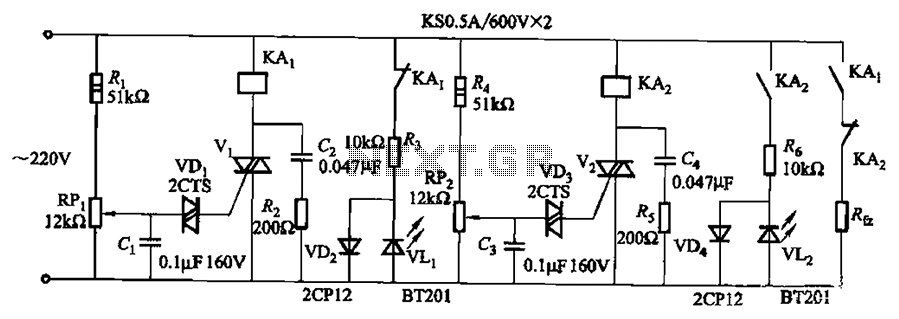
Vu meter stereo circuit
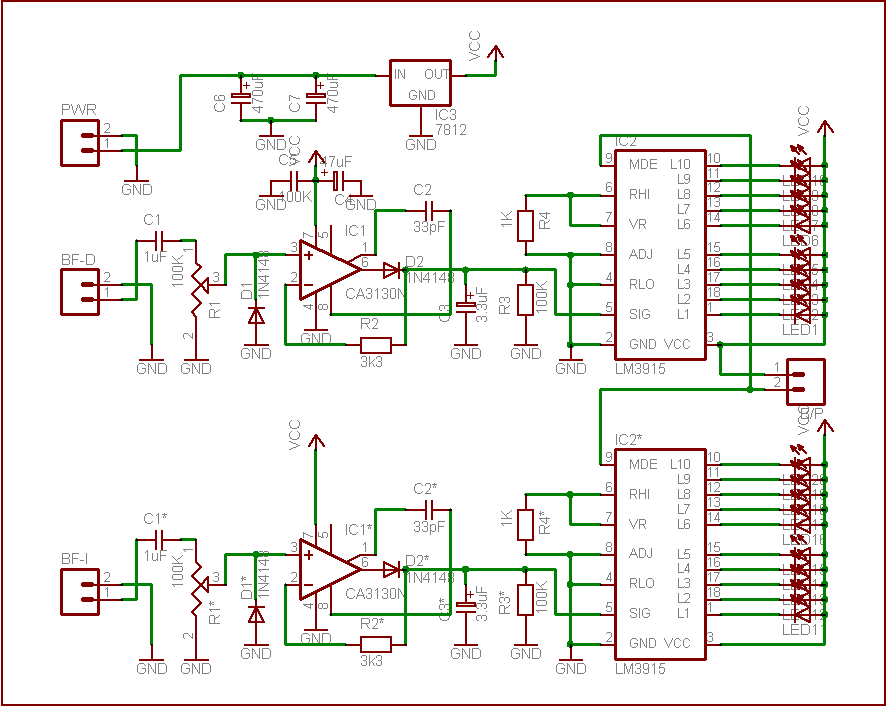
This simple circuit is based on the well-known integrated circuit LM3915. The main characteristic of this integrated circuit is its ability to manage 10 Light Emitting Diodes (LEDs) in a logarithmic scale, with a 3dB difference between the LEDs, which can be illuminated in a slash or dot format. The other integrated circuit, CA3130, is responsible for amplifying and rectifying the audio signal entering the LM3915. To calibrate the VU meter to 0dB, a free program for Windows can be downloaded to generate a test tone, which does not require installation. With the output set to 1000 Hz and 0dB in sine mode, the trimmer R1 should be adjusted until the seventh LED in the assembly lights up, indicating 0dB. To configure the LEDs to illuminate in a slash format, the jumper marked B/P on the circuit must be short-circuited. When the jumper is open, the LEDs will light up in a dot format, one by one.
The circuit utilizes the LM3915, a versatile LED bar graph/LED dot display driver, which can operate in two modes: bar mode and dot mode. In bar mode, the LEDs display a continuous level, while in dot mode, only one LED is illuminated at a time, corresponding to the input signal level. The CA3130, a precision op-amp, is used to process the audio signal, ensuring that it is amplified and rectified before being fed into the LM3915. This combination allows for a visual representation of audio levels, making it ideal for audio applications such as VU meters.
To implement this circuit, the LM3915 is connected to a series of 10 LEDs, each representing a different level of audio signal strength. The CA3130 is connected to the audio source, with its output linked to the input of the LM3915. The trimmer resistor R1 is crucial for calibration, allowing fine adjustments to ensure that the meter accurately reflects the 0dB level. The jumper configuration offers flexibility in display style, enabling users to choose between a dot or slash indication based on their preference or application requirements.
This circuit can be effectively used in audio mixing consoles, sound level meters, or any electronic device where audio level monitoring is necessary. The simplicity of the design, combined with the functionality of the LM3915 and CA3130, makes it a valuable tool for both amateur and professional audio engineers. Proper assembly and calibration will yield a reliable and visually informative audio level indicator.This simple circuit is based on the well-known integrated circuit LM3915. The main characteristic of this integrated circuit is its power to manage 10 LED-s (Light Emitting Diodes) in logarithmic scale with a difference between the 3dB LED-s, which it can turn on the slash or on the dot . The other integrated circuit, the CA3130 is in charge of amplifying and rectifying the audio signal to the entrance of LM3915. To adjust the vu-meter to 0dB, we can download any free programme for Windows which will generate BF, , for example, which doesn`t even need to be installed. With the exit adjusted to 1000 Hz and 0dB in the sine mode, we shall move the trimmer R1 until the seventh led of our assembly is lit on, and it will correspond with 0dB.
If we wish the LED-s to turn on the slash , we`ll have to short-circuit the jumper of the circuit marked as B/P. When the jumper is open, the LED-s are lit on the dot , one by one. 🔗 External reference
The circuit utilizes the LM3915, a versatile LED bar graph/LED dot display driver, which can operate in two modes: bar mode and dot mode. In bar mode, the LEDs display a continuous level, while in dot mode, only one LED is illuminated at a time, corresponding to the input signal level. The CA3130, a precision op-amp, is used to process the audio signal, ensuring that it is amplified and rectified before being fed into the LM3915. This combination allows for a visual representation of audio levels, making it ideal for audio applications such as VU meters.
To implement this circuit, the LM3915 is connected to a series of 10 LEDs, each representing a different level of audio signal strength. The CA3130 is connected to the audio source, with its output linked to the input of the LM3915. The trimmer resistor R1 is crucial for calibration, allowing fine adjustments to ensure that the meter accurately reflects the 0dB level. The jumper configuration offers flexibility in display style, enabling users to choose between a dot or slash indication based on their preference or application requirements.
This circuit can be effectively used in audio mixing consoles, sound level meters, or any electronic device where audio level monitoring is necessary. The simplicity of the design, combined with the functionality of the LM3915 and CA3130, makes it a valuable tool for both amateur and professional audio engineers. Proper assembly and calibration will yield a reliable and visually informative audio level indicator.This simple circuit is based on the well-known integrated circuit LM3915. The main characteristic of this integrated circuit is its power to manage 10 LED-s (Light Emitting Diodes) in logarithmic scale with a difference between the 3dB LED-s, which it can turn on the slash or on the dot . The other integrated circuit, the CA3130 is in charge of amplifying and rectifying the audio signal to the entrance of LM3915. To adjust the vu-meter to 0dB, we can download any free programme for Windows which will generate BF, , for example, which doesn`t even need to be installed. With the exit adjusted to 1000 Hz and 0dB in the sine mode, we shall move the trimmer R1 until the seventh led of our assembly is lit on, and it will correspond with 0dB.
If we wish the LED-s to turn on the slash , we`ll have to short-circuit the jumper of the circuit marked as B/P. When the jumper is open, the LED-s are lit on the dot , one by one. 🔗 External reference

